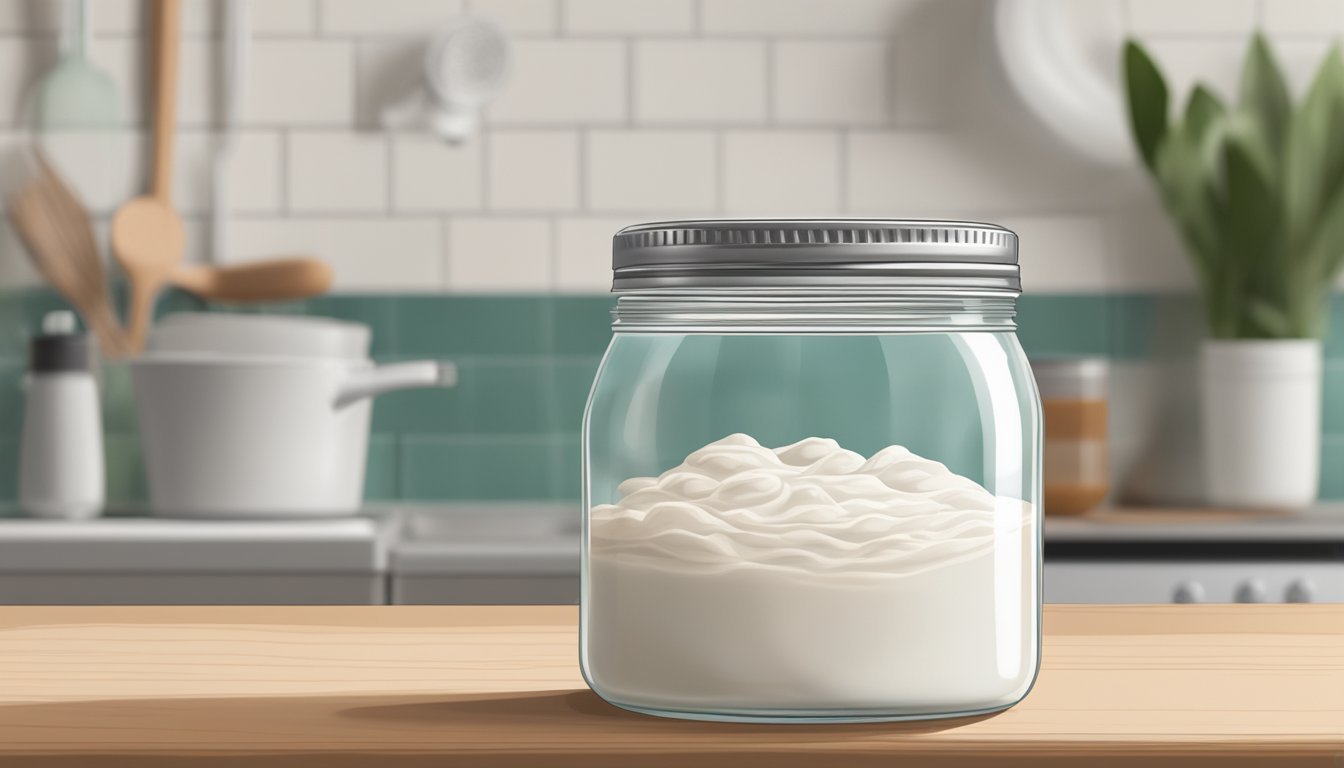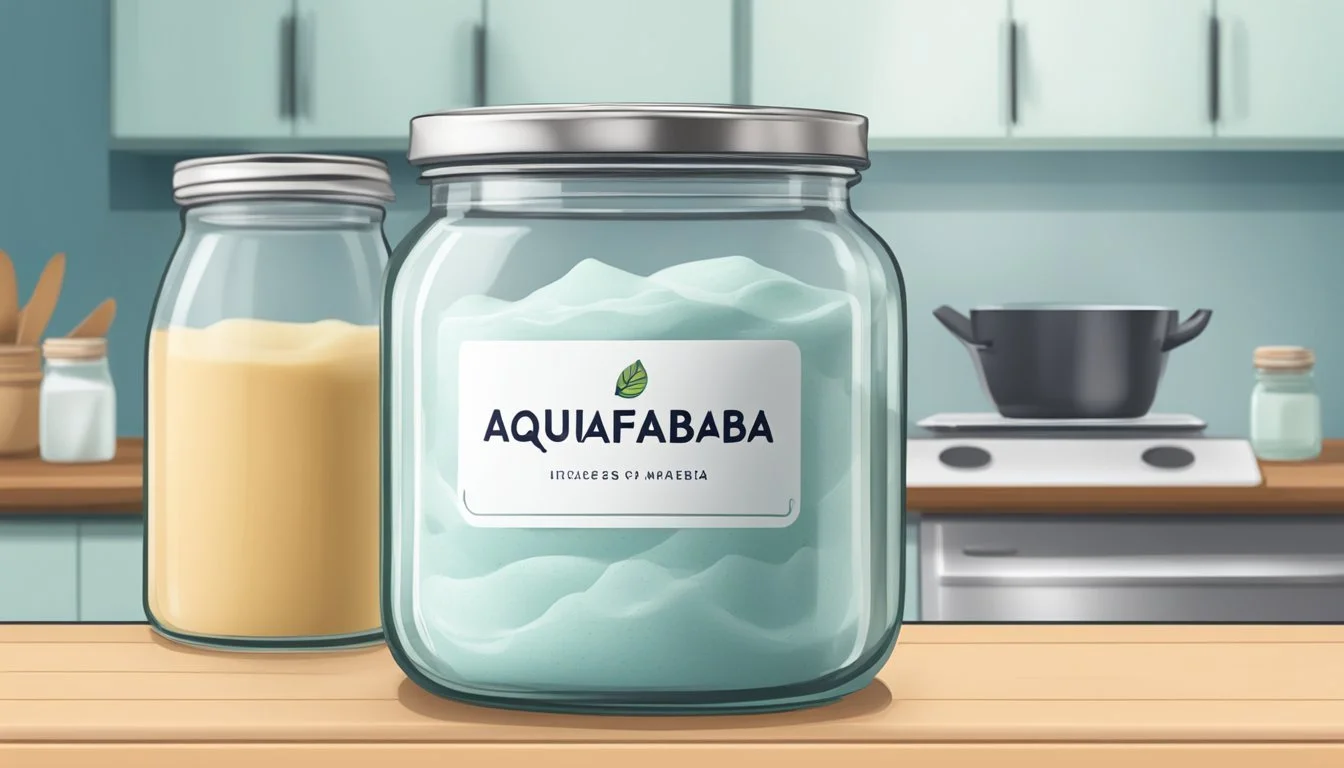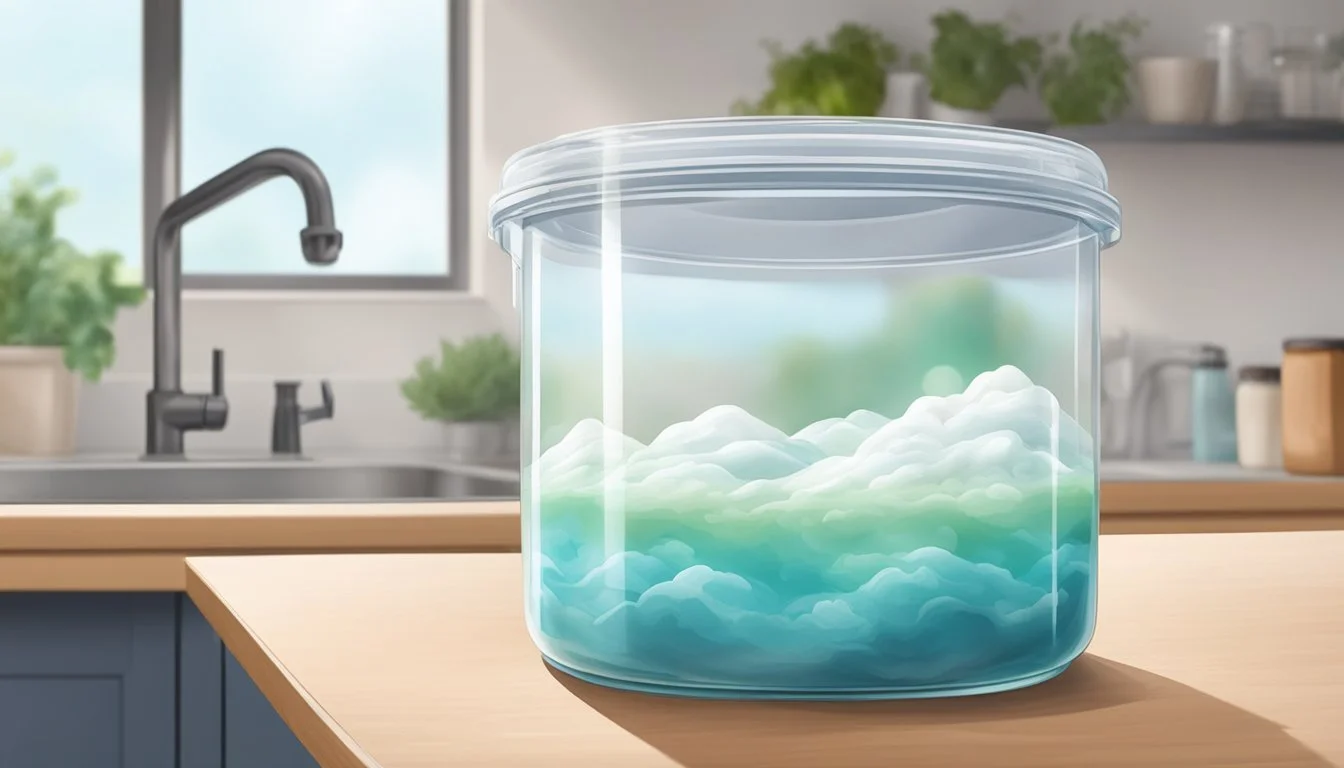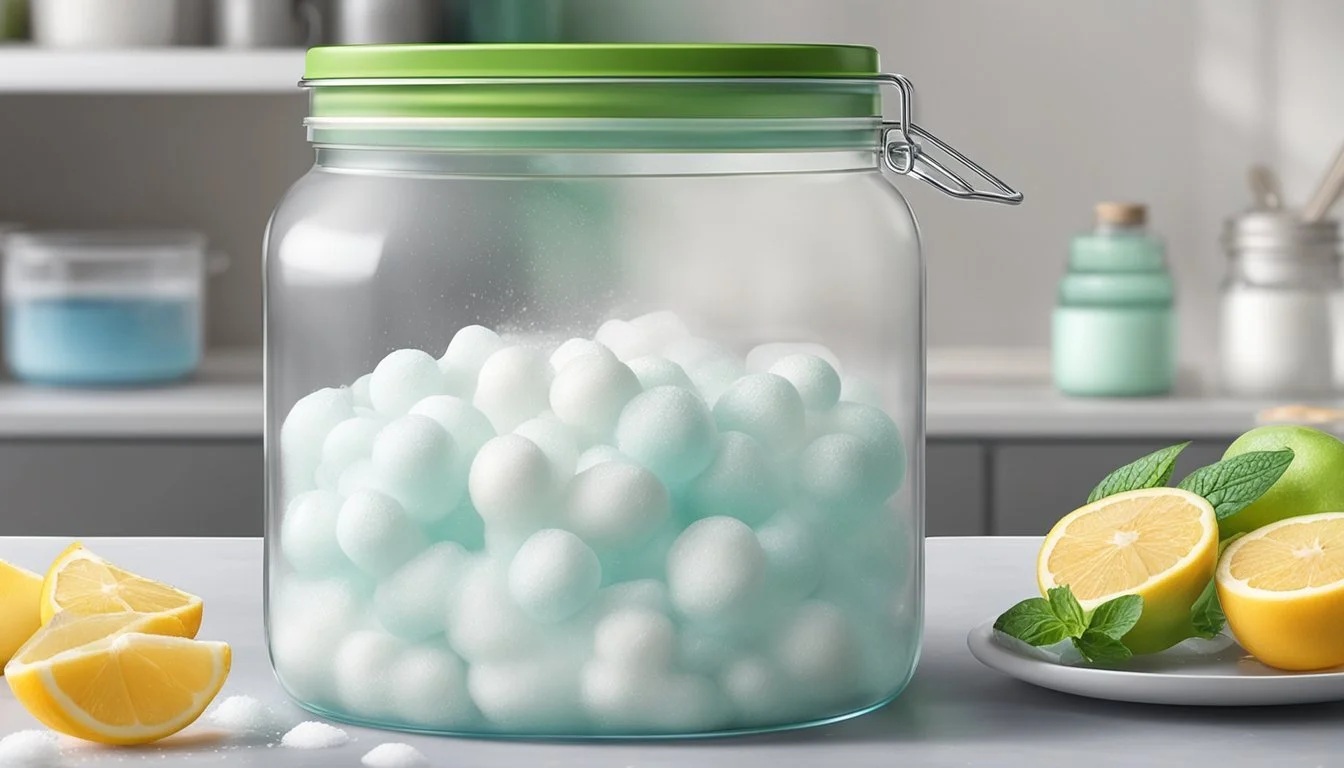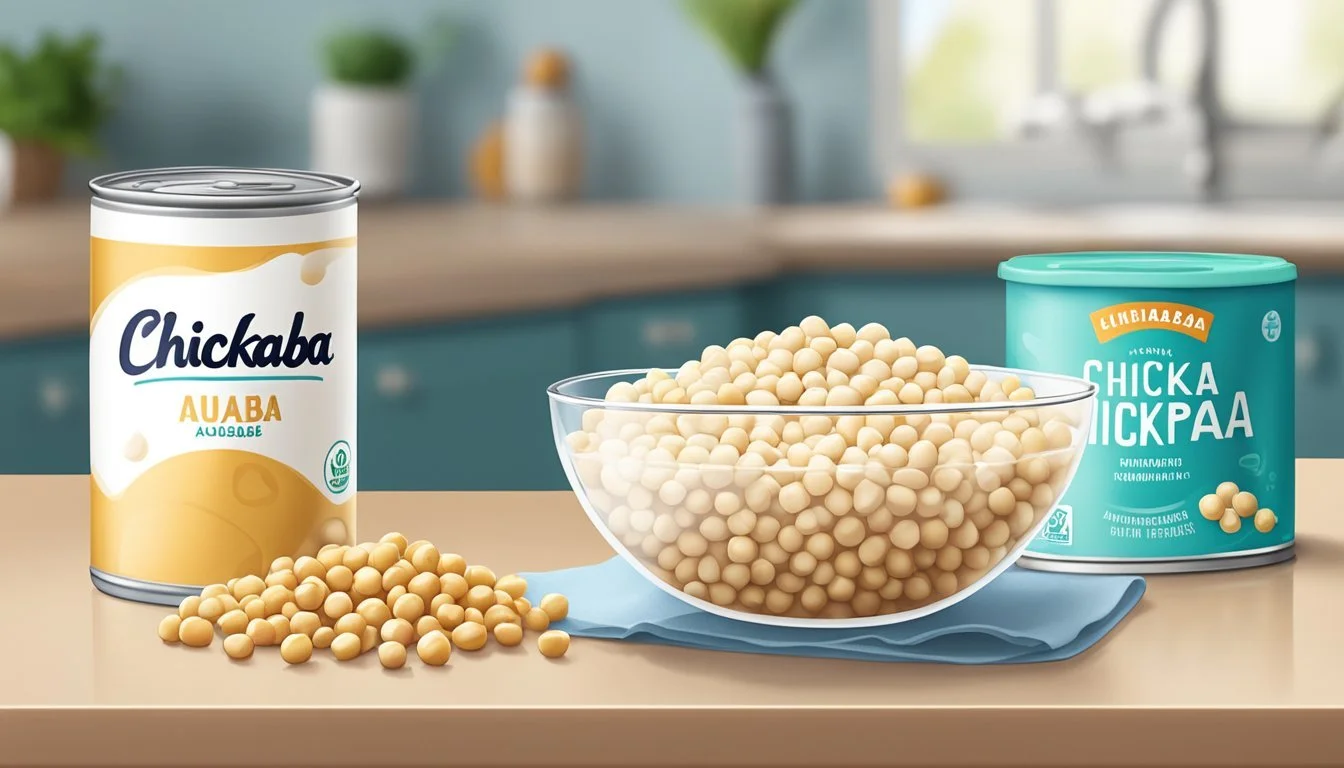Does Aquafaba Go Bad?
Understanding the Shelf Life of Chickpea Water
Aquafaba, the viscous water in which legume seeds such as chickpeas have been cooked, has emerged as a popular vegan substitute for egg whites. This ingredient is beloved in the vegan community for its ability to mimic the binding, thickening, and emulsifying properties of egg whites in recipes ranging from meringues to mayonnaise. However, like many food products, aquafaba's shelf life is finite and subject to proper storage conditions to maintain its usability and prevent spoilage.
Understanding whether and when aquafaba goes bad is essential for those who use this ingredient regularly. While aquafaba is incredibly useful in vegan cuisine, ensuring its freshness is paramount as spoiled aquafaba can introduce off-flavors and potentially harmful bacteria into dishes. Typically, homemade aquafaba has a refrigerated shelf life of 3-4 days, which can be extended to several months if frozen. Commercially canned aquafaba may last longer, depending on preservatives and packaging—but once opened, even these products must be used within a short timeframe to ensure quality and safety.
Safe storage is paramount; transferring aquafaba to an airtight container before refrigerating can greatly extend its usability. Preventing contamination is important, as the presence of protein and moisture in aquafaba makes it susceptible to bacterial growth. Therefore, whether one is preparing a quick vegan dessert or storing aquafaba for later use, it's critical to be aware of its perishable nature and adhere to recommended storage practices.
Understanding Aquafaba
Aquafaba is the liquid leftover from cooking legumes, such as chickpeas, that has gained popularity as a vegan egg substitute due to its unique ability to mimic the functional properties of egg whites in cooking and baking.
Origins and Composition
Aquafaba translates from Latin to mean "bean water," aptly describing its origin as the cooking liquid of beans and other legumes. The solution contains a mixture of proteins, starches, and other plant solids, which are released into the water during cooking. These components are responsible for the liquid's functional qualities, including its ability to foam, emulsify, and act as a binder—attributes that traditionally come from eggs.
Culinary Uses
In vegan cooking and baking, aquafaba serves multiple purposes. It's primarily used as an egg substitute due to its ability to provide structure and stability in recipes. A couple of notable culinary applications are:
Foam: Beating aquafaba allows it to trap air and create foam, which can be used to make meringues or as a leavening agent.
Binder: It acts as a cohesive agent that can hold ingredients together in preparations like veggie burgers.
Emulsion: The liquid can emulsify fats and oils, contributing to creamy textures in mayonnaise or sauces.
Whipped Cream: By whipping chilled aquafaba, it can be turned into a light, fluffy substitute for whipped cream, ideal for use in various vegan desserts.
Chefs and home cooks alike value aquafaba for its versatility and its role in expanding the possibilities of vegan cuisine.
Storing Aquafaba
Proper storage of aquafaba is essential for maintaining its quality and extending its shelf life. Aquafaba, the water or liquid from cooking legumes like chickpeas, is devoid of preservatives, making it susceptible to spoilage.
In the Refrigerator
Aquafaba should be kept in the refrigerator when not in use. It is best to store the liquid in an airtight container or a mason jar to prevent contamination and odor absorption from other foods. Homemade aquafaba or the liquid from canned chickpeas should be cooled to room temperature before refrigerating. In the fridge, aquafaba can remain fresh for up to one week.
In the Freezer
Freezing extends the shelf life of aquafaba significantly. To freeze, one may pour aquafaba into an ice cube tray which allows for easy portioning later on. Once frozen, transfer the cubes into a plastic container or bag to prevent freezer burn. Stored in the freezer, aquafaba can be kept for about four months. When ready to use, thaw the necessary amount of aquafaba in the refrigerator.
Identifying Spoilage
When keeping aquafaba, it's essential to recognize spoilage signs promptly to ensure the quality of the product is not compromised. Proper storage can extend shelf life, but once spoiled, it poses a risk due to bacteria and mold growth, and should not be used.
Signs of Bad Aquafaba
Aquafaba that has gone bad will typically exhibit some telltale signs indicating it is no longer fit for consumption. These include:
Changes in appearance: Clear or slightly opaque aquafaba turning cloudy or discolored.
Mold growth: Any visible signs of mold or spores should be an immediate indicator of spoilage.
Unpleasant odor: A sour or otherwise off smell is a clear sign that aquafaba has spoiled.
Factors Affecting Shelf Life
Several factors can affect how long aquafaba remains usable:
Storage method: Aquafaba's shelf life can be extended by refrigeration, usually 4 to 7 days, or by freezing for up to 3 months.
Container quality: An airtight, clean container is vital to prevent bacteria introduction and prolong shelf life.
Additives: Preservatives may extend the shelf life, while homemade aquafaba without added preservatives will have a shorter lifespan.
Expiration date: For store-bought aquafaba, adhere to the expiration date on the packaging.
Hygiene conditions: Keeping the storage refrigerator clean will also help prevent premature spoilage.
Freezing and Thawing Aquafaba
Aquafaba, the viscous liquid obtained from cooked legumes like chickpeas, is a versatile, plant-based egg substitute. Its quality can deteriorate over time, but by freezing, one can extend its shelf life significantly. Freezing aquafaba also reduces waste, allowing users to keep it fresh for future use. Proper thawing is crucial to preserve its egg-like properties.
Effective Freezing Techniques
One can freeze aquafaba using ice cube trays, an approach that simplifies measuring the precise amounts needed for recipes. A standard cube slot usually holds approximately 2 tablespoons, which is equivalent to one egg white. Here's a step-by-step guide to freeze aquafaba:
Cool the aquafaba: Ensure it reaches room temperature to prevent any ice crystals from forming, as they can affect texture.
Measure accurately: Use a measuring spoon to fill the ice cube trays with aquafaba. This makes it easier to know how much you're using later.
Freeze: Place the filled trays in the freezer and allow the aquafaba to freeze thoroughly. This could take several hours.
Store: Once frozen, transfer the aquafaba ice cubes to a freezer-safe bag or container to prevent freezer burn and keep them fresh.
Freezing Duration Note: Aquafaba can last in the freezer for approximately six months without significant degradation in quality.
Thawing Aquafaba for Use
Thawing aquafaba properly ensures it retains its properties and prevents it from going bad:
Room Temperature Thawing: Transfer the required number of frozen aquafaba cubes to a bowl and let them thaw at room temperature. This process does not require heat and typically doesn't take long.
Avoid Heat: Do not attempt to thaw aquafaba using a microwave or stovetop, as this could alter its binding and foaming abilities.
Once thawed, the aquafaba is ready to be used as a direct substitute for eggs in a variety of dishes and desserts, from meringues to mayonnaise.
Utilizing Aquafaba in Recipes
Aquafaba is a versatile ingredient in vegan baking, serving as an egg substitute that can create impressive results such as fluffy meringue and moist cakes. It provides structure and moisture to a range of recipes, from sweet to savory.
Baking with Aquafaba
When it comes to baking, aquafaba is a star for creating light and airy meringues and macarons. To achieve the best results, one must whisk the aquafaba until it forms stiff peaks, a process that can take between 3 to 6 minutes. Adding a pinch of cream of tartar can help stabilize the peaks. Here are two specific uses:
Meringues and Macarons: Replace egg whites with aquafaba in a 1:1 ratio to make vegan versions of these classic treats.
Cakes and Baked Goods: Incorporate it into recipes for egg-free blueberry muffins or chocolate cakes to add lightness without altering the flavor.
Non-Baking Uses
Aquafaba is not limited to baking and can be used in various non-baking recipes to add texture and cohesiveness. It can also be whipped into a substitute for items like coconut whipped cream, which is a staple in the vegan larder. Here are two specific uses:
Vegan Whipped Cream: Mix aquafaba with sugar and vanilla to create a delicious topping for desserts.
Egg-Free Mayonnaise: Emulsify it with oil and a bit of mustard to craft a vegan alternative to traditional mayo.
By experimenting with aquafaba, chefs and home cooks can create a plethora of vegan and egg-free options without compromising on taste or texture.
Optimizing Aquafaba Use
To make the most of aquafaba, particularly as an egg substitute in cooking and baking, one needs to employ effective whisking techniques and adopt measures to prevent waste. Proper handling can transform this legume-derived liquid into a powerful leavener, mimicking the properties of egg whites in recipes.
Maximizing Whisking Techniques
Consistency is vital when using aquafaba as a substitute for eggs, especially to create firm peaks for meringues or to achieve a light, airy texture in baked goods. To ensure optimal results:
Use a stand mixer or an electric hand mixer on high speed to whisk the aquafaba. This is more efficient than attempting to whisk by hand which may not yield the desired results.
For enhanced stability, add a stabilizing ingredient such as cream of tartar (1/8 teaspoon per 2 tablespoons of aquafaba).
The consistency should be checked frequently, as over-beating can lead to aquafaba that weeps and results in pancake-flat meringues.
Techniques to Prevent Waste
Storing and extending the shelf-life of leftover aquafaba ensures it's available when needed without resorting to opening new cans or cooking more legumes. Follow these practices:
Refrigerate aquafaba by pouring it into a jar and tightly securing the lid. Shake the jar before use to redistribute any settled particles. It can be refrigerated for 4 to 7 days.
For longer storage, measure the aquafaba and pour it into an ice cube tray to freeze. Once solid, transfer cubes to a freezer-safe container, noting the date. Frozen aquafaba lasts up to 3 months.
Strain aquafaba using a fine-mesh strainer to remove any particulate matter before storing it. This ensures a smoother consistency in your recipes.
Aquafaba from white beans, black beans, or other legumes can be used as substitutes, but chickpea liquid is preferred due to its neutral taste and color.
Adopting these approaches optimizes the usage of aquafaba, making it a reliable and ready-to-use ingredient for when a leavener or an egg substitute is required in culinary applications.
Advanced Aquafaba Techniques
Mastering the use of aquafaba in vegan and egg-free recipes allows bakers to achieve textures and consistencies akin to those with egg-based components. This section delves into methods for creating stable foams and emulsions along with tips for perfecting meringues and whipped cream alternatives.
Creating Foams and Emulsions
In vegan cooking, aquafaba serves as an excellent base for foams and emulsions, key elements in many recipes. To create a successful foam, the baker must agitate the aquafaba to incorporate air. For emulsions, aquafaba is an effective emulsifier:
Begin with chilled aquafaba for more stability.
Use a stand mixer or electric hand mixer; manual whisking may not achieve the desired result.
Additions such as cream of tartar can stabilize the foam.
Application Example:
Foam: Use in coffee drinks or cocktails for a light, airy topping.
Emulsion: Perfect for vegan mayonnaise or aioli.
Achieving Perfect Meringues and Whipped Cream
When creating egg-free meringues or whipped cream, aquafaba's ability to mimic egg whites is invaluable:
Meringue: Whisk aquafaba to stiff peaks, adding sugar gradually if the recipe calls for it.
Whipped Cream: Incorporate vanilla extract and a sweetener while beating until peaks form.
Techniques:
For stiff peaks, add aquafaba to a clean, grease-free bowl and beat until voluminous and glossy.
Aquafaba's brine should be reduced for a thicker consistency akin to egg whites.
Bake meringue cookies at a low temperature to dry out without browning, creating a crunchy texture.
Bakers' Tips:
Patience is key; whipping can take up to 6 minutes with a stand mixer.
Store any unused aquafaba in the refrigerator in a sealed container to maintain its condition.

